Featured Comment:
“Just made it tonight! So good and so comforting!”
– Rodrigo
What is Kenchin Jiru (Soup)?
Kenchin Jiru (written as けんちん汁 or 巻繊汁) is a Japanese vegetable soup made by sautéing daikon radish, carrots, burdock root, konnyaku, etc in sesame oil, adding vegetarian soup stock, simmering, and finally seasoning with soy sauce.
Originally, since it was a “shojin ryori” dish (Japanese vegetarian dish), no meat or fish was added. The dashi broth is also made from kombu and/or shiitake mushrooms, unlike the usual bonito flakes or dried sardines.
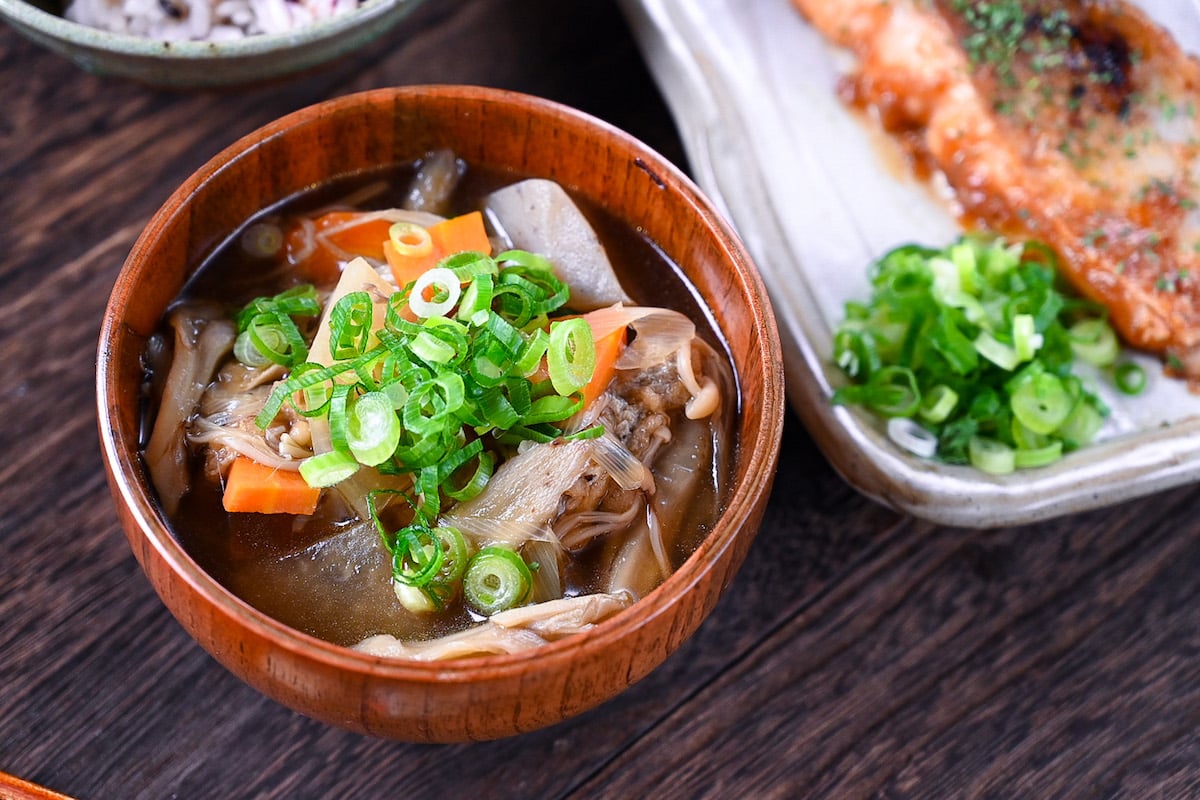
Visual Walkthrough & Tips
Here are my step-by-step instructions for how to make Kenchin Jiru at home. For ingredient quantities and simplified instructions, scroll down for the Printable Recipe Card below.
If you prefer to watch the process in action, check out my YouTube video of this recipe for a complete visual walkthrough!
Dashi is most commonly made with bonito flakes (skipjack tuna) and kombu (dried kelp). However, Kenchin Jiru is a vegetarian/vegan soup; therefore, the dashi should also be plant-based.
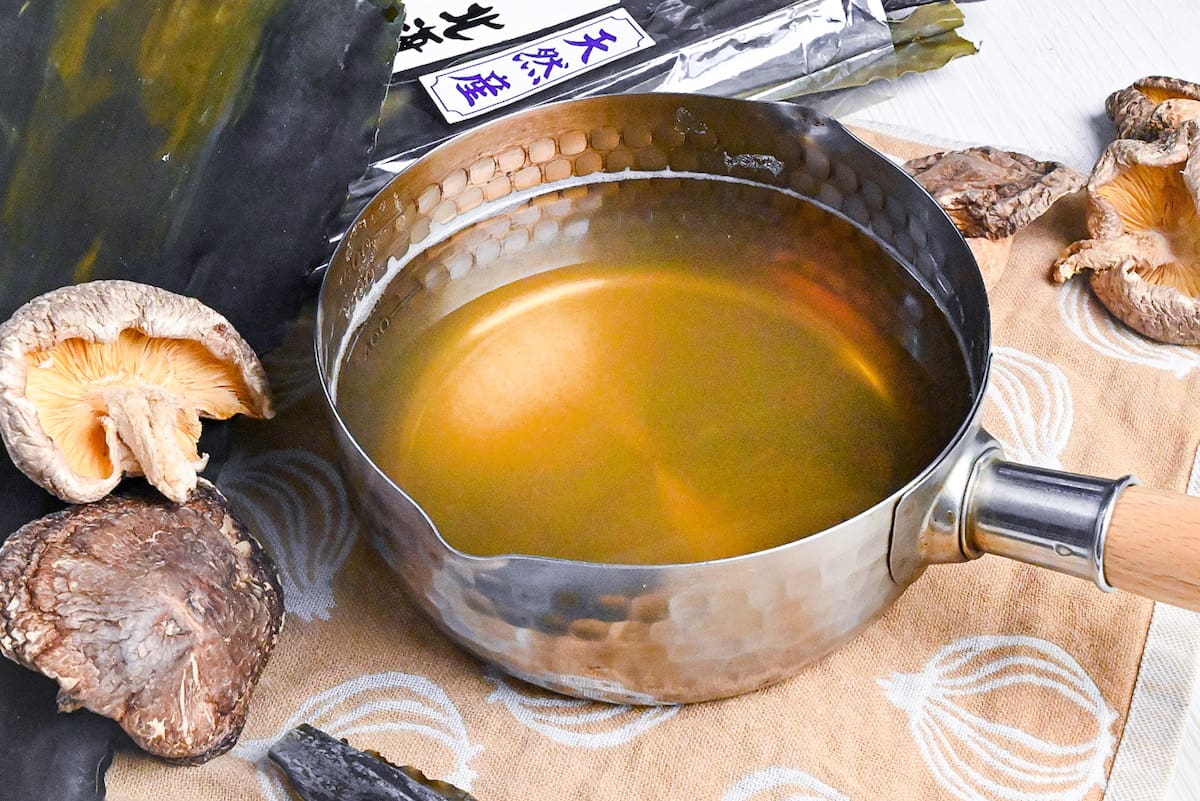
Because this soup relies on a good dashi, I recommend making your own using kombu and dried shiitake mushrooms. It takes about 30 minutes to soak the kombu and shiitake mushrooms in water; then, the shiitake can be removed and used as an extra vegetable in the soup.
If you have time, I recommend soaking it for longer (overnight if possible!). I’ve included the instructions in the recipe card below, but if you want to learn more about making vegan awase dashi, you can check out my post here.
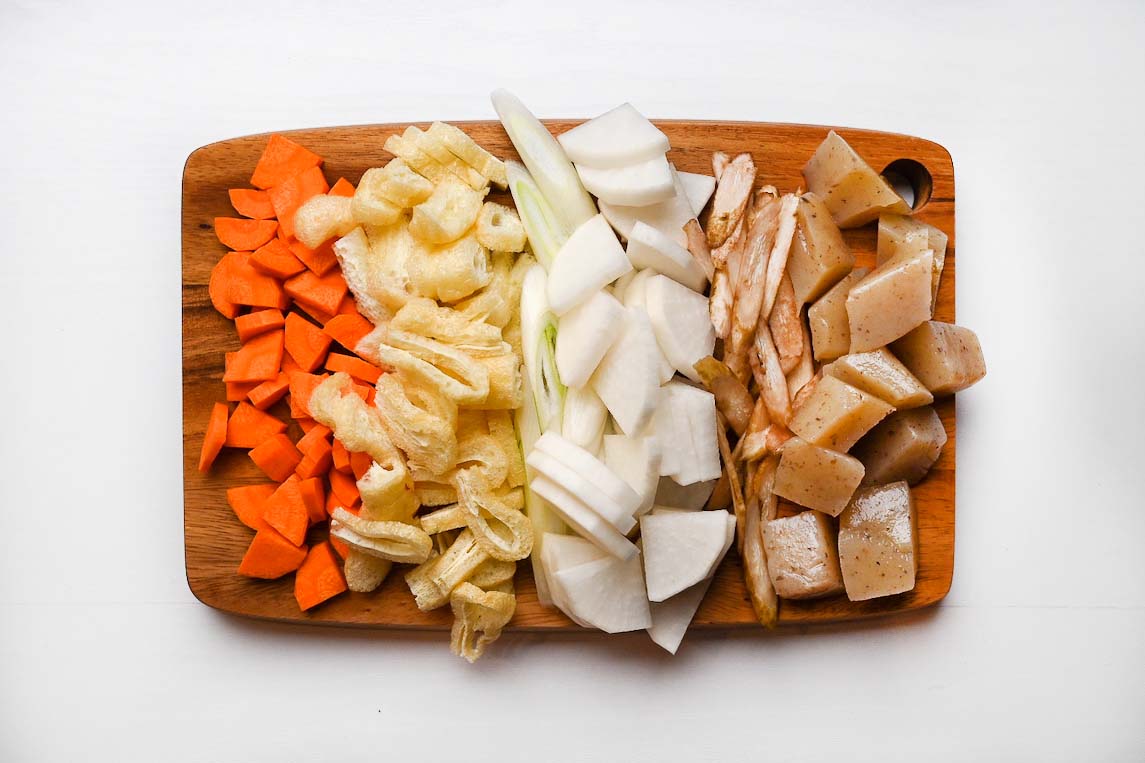
Because I add all of the vegetables at the same time, it’s important to cut them to similar sizes to ensure even cooking. Root vegetables like carrots and daikon take longer to cook, so I cut them into thin rounds and then cut the rounds into quarters.
The gobo (burdock root) skin should be scraped with a knife (rather than peeled with a peeler) and then cut into diagonal slices to increase the surface area.
Finally, things like konnyaku (or firm tofu) are cut into rough bitesize chunks. I also used aburaage (twice-fried tofu) cut into slices in my recipe.
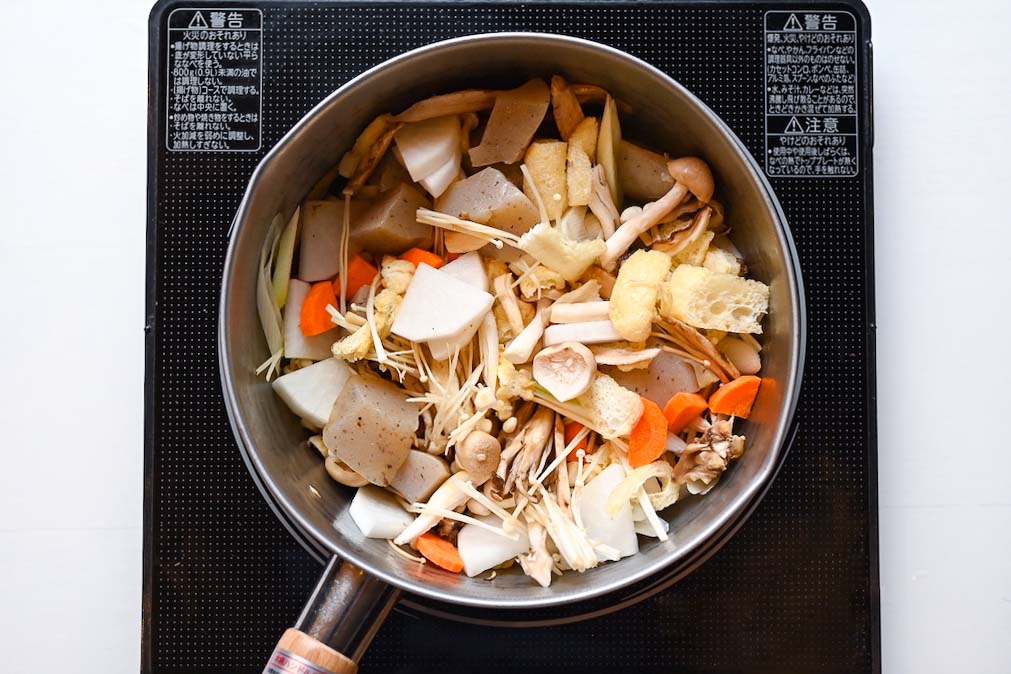
Some people might simply boil the ingredients in dashi, but I like to sauté them with sesame oil before adding the broth.
This improves the texture and helps each vegetable retain more of its individual flavor rather than the flavors becoming blurred in the soup.
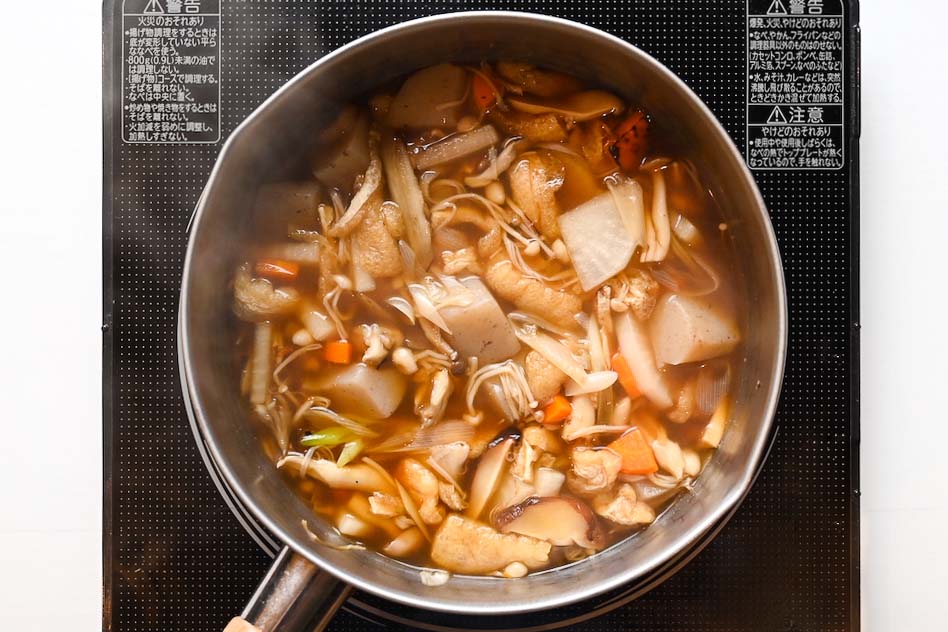
Softening the vegetables in the dashi takes some time, so I like to add condiments to flavor the soup near the end. This will allow the flavors to shine in the soup broth rather than be absorbed into the vegetables.
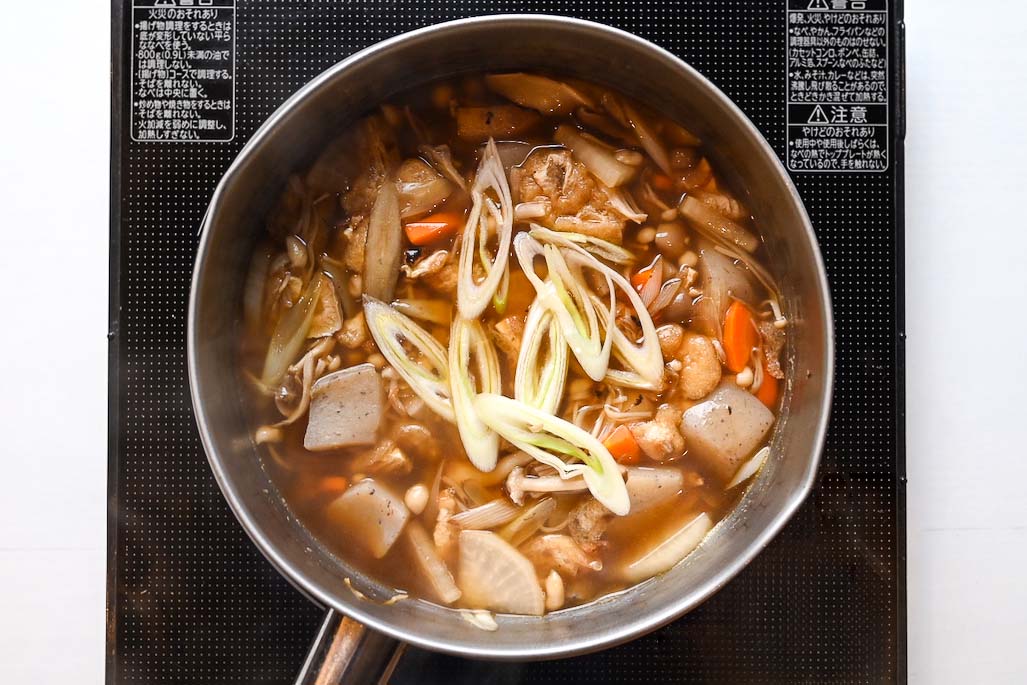
Japanese Negi (large green onion/leek) cooks quickly and can become lost if added too early. I cut the white part into diagonal slices and then add it for the best taste and texture! You can also finely chop the green part and use it as a garnish.
Jump to Full Recipe Measurements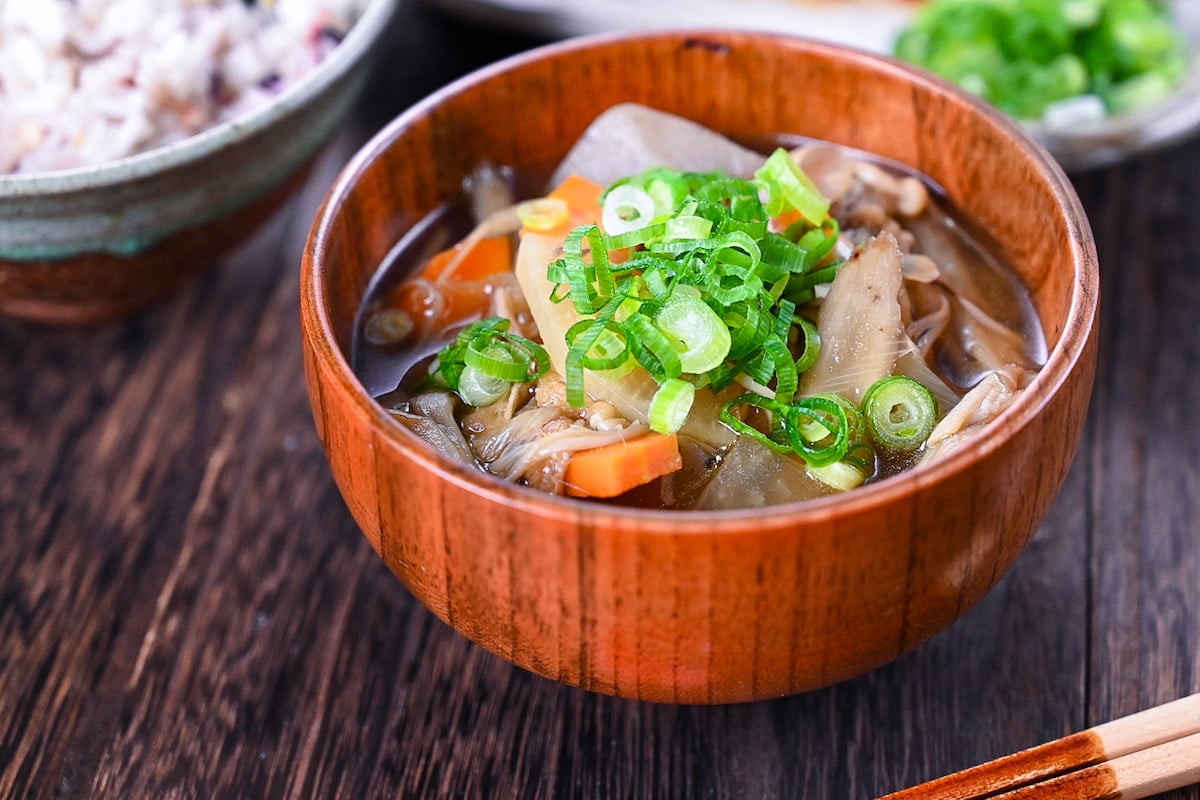
FAQ
You might not associate Japanese cuisine with vegetarian dishes, but some very traditional vegetarian dishes still exist today. Shojin ryori (精進料理) is a type of cuisine closely associated with Buddhism that does not use meat or fish.
The word “shojin” is a Buddhist term meaning “to cultivate one’s mind by avoiding gourmet food and meat, and to cultivate one’s spirit by eating coarse or vegetarian food. The cuisine itself is said to have been established around the 12th century.
The ingredients used in shojin ryori are characterized by the use of only “shojinmono,” which refers to plant-based ingredients. So you can say shojin ryori is almost identical to the definition of modern-day vegan.
There are various theories as to the origin of the name “Kenchin.” One theory is that the name came into Japanese from a Chinese vegetarian dish called “kenchan” and another theory is that Kencho soup, made at Kenchoji Temple in Kamakura, somehow came to be called “Kenchin” soup.
Kenchin-jiru is now served in many parts of Japan but has been served at Kenchoji Temple for over 700 years. According to a theory, it spread throughout Japan as the monks who trained at Kenchoji Temple were dispatched to various regions across the country.
Dried shiitake mushrooms are required for making dashi. Although they are both the same mushrooms, we tend to think of them as completely different ingredients.
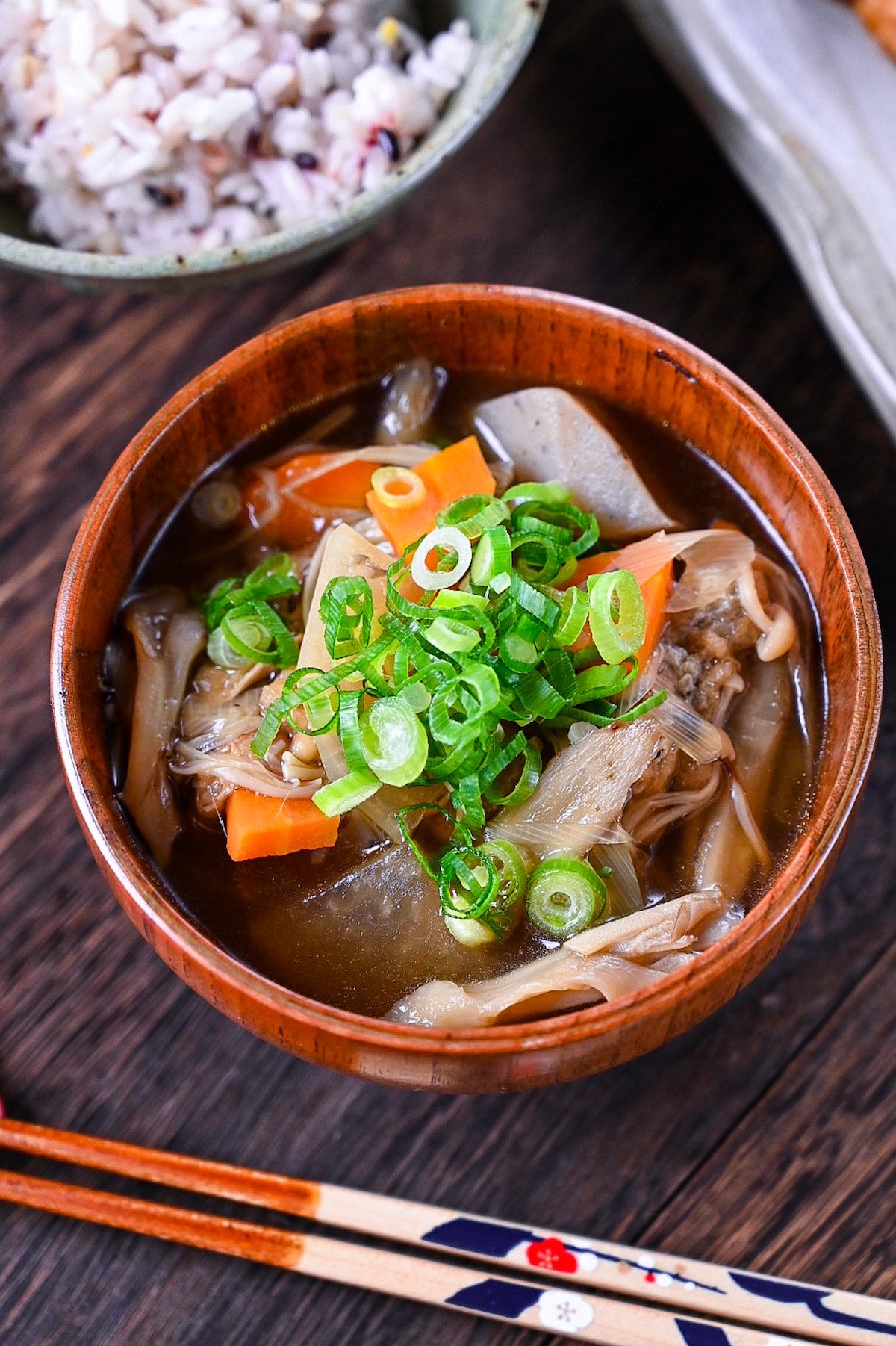
I hope you enjoy this Kenchin Jiru recipe! If you try it out, I’d really appreciate it if you could spare a moment to let me know what you thought by giving a review and star rating in the comments below. It’s also helpful to share any adjustments you made to the recipe with our other readers. Thank you!
More Japanese Plant-based Recipes
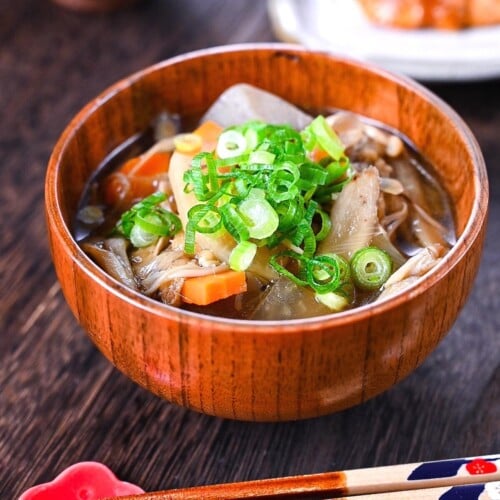
Kenchin Jiru (Traditional Japanese Vegetable Soup)
Ingredients
Dashi
- 500 ml water
- 5 g dried kelp (kombu) kombu
- 10 g dried shiitake mushroom
Kenchin Jiru
- 1 tsp toasted sesame oil
- 75 g carrot cut into rounds and quartered
- 250 g daikon radish cut into rounds and quartered
- 100 g burdock root (gobo) gobo, peeled and diagonally sliced
- 150 g konjac (konnyaku) konnyaku, rough bitesize chunks
- 20 g fried tofu pouch (aburaage) aburaage, thinly sliced
- 50 g shimeji mushrooms
- 100 g enoki mushrooms
- 50 g Japanese leek (naganegi) diagonally sliced
Broth
- 2 tbsp sake
- 2 tbsp mirin
- 3 tbsp Japanese soy sauce (koikuchi shoyu)
Instructions
- Add 5 g dried kelp (kombu) and 10 g dried shiitake mushroom to a pot with 500 ml water. Cover and allow to soak for at least 30 minutes. (If you have time, leave overnight for a deeper flavour.)

- Remove the shiitake mushroom and thinly slice it to add back to the soup later.

- Place the pot on the stove and heat until the dashi starts to bubble (don't let it boil). When it's nearly boiling, lower the heat to simmer, remove the kombu, and turn off the heat.

- Heat up another large pot on medium and add 1 tsp toasted sesame oil. Add all of the ingredients except for green onion (we'll add that later) and stir fry until the root vegetables are softened slightly.

- Pour the dashi into the pot with the other ingredients and simmer until the carrot and daikon are soft enough to pierce with a fork.

- Add 2 tbsp sake, 2 tbsp mirin and 3 tbsp Japanese soy sauce (koikuchi shoyu) and simmer for 2-3 minutes.

- Finally add 50 g Japanese leek (naganegi) and simmer for another 5 minutes. Taste test, you can simmer for longer to make the flavour more concentrated or add a little more soy sauce to taste.

- Dish up and enjoy!

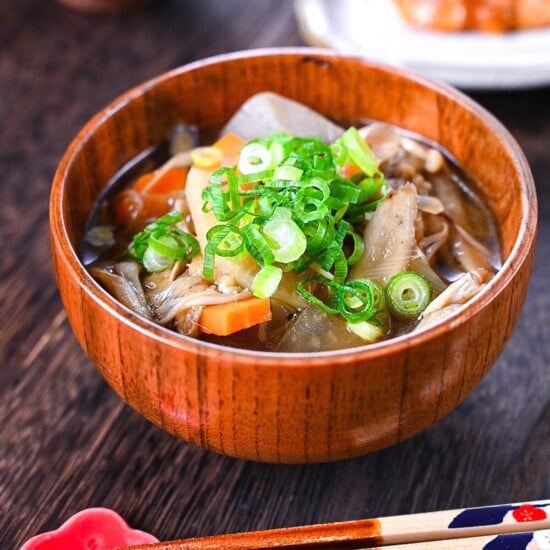




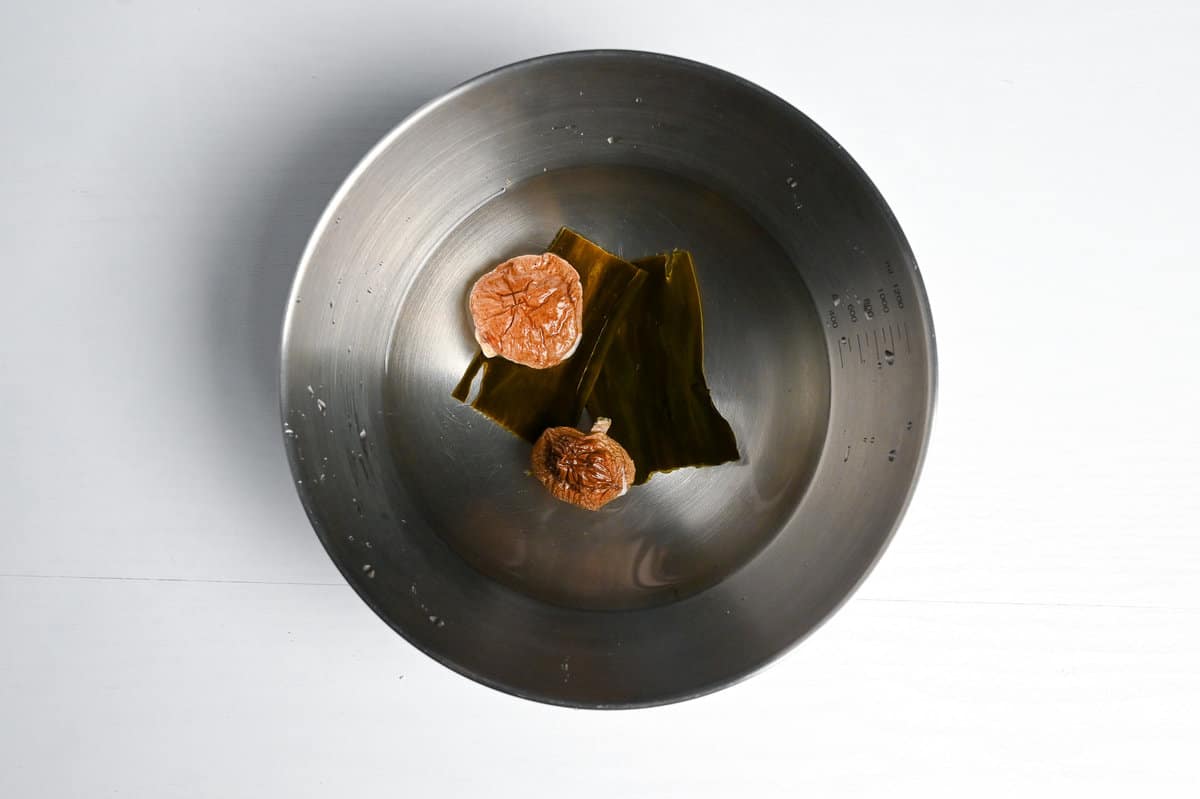
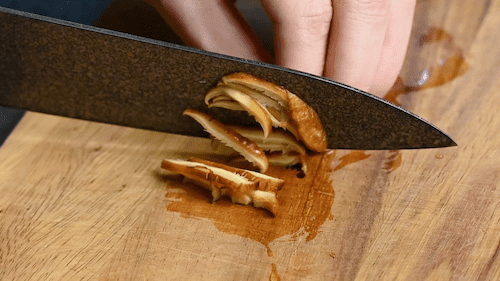
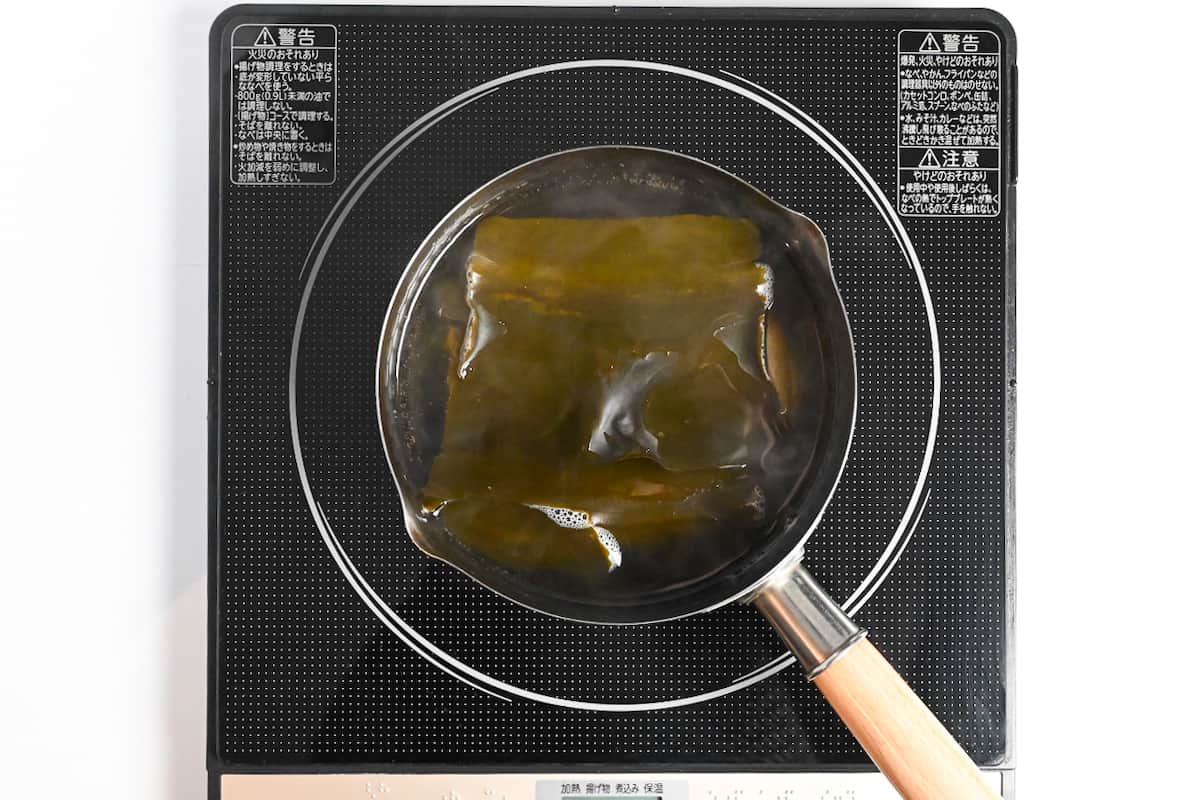
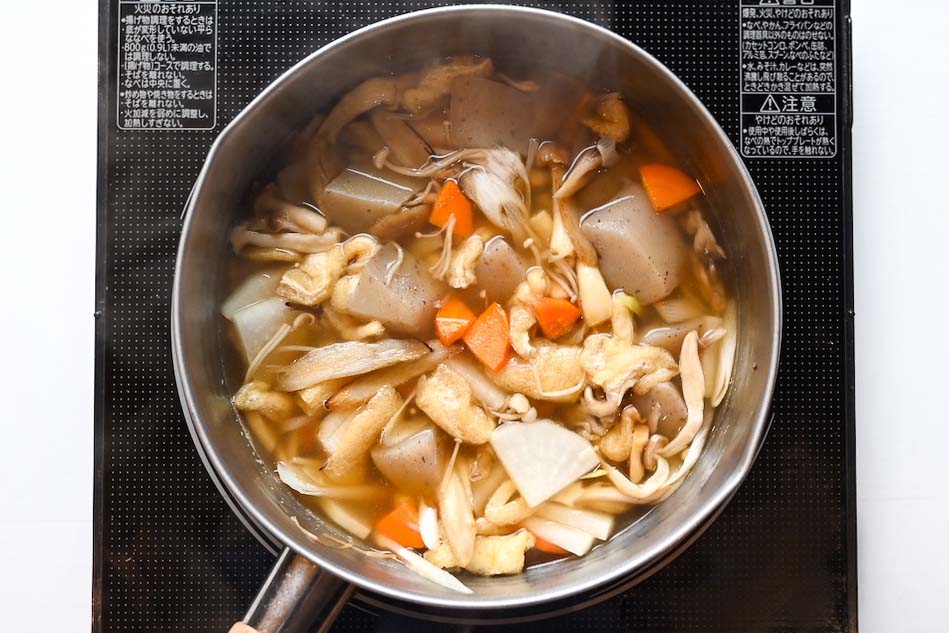
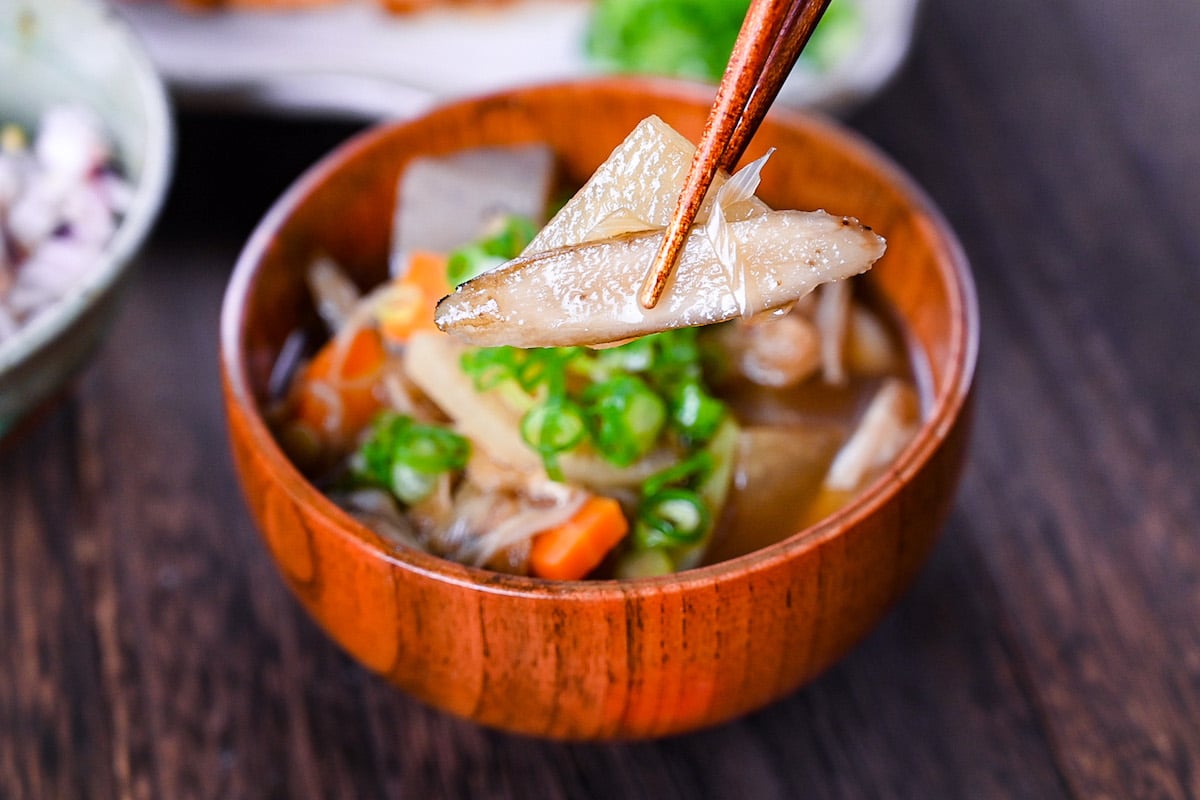
Just made it tonight! So good and so comforting!
Hi Rodrigo,
Thank you for the comment and the picture! Looking great! I’m happy to hear that you enjoyed this comforting recipe! 🙂
Yuto